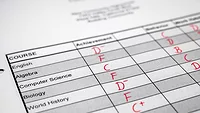Crisis in Central Florida Looms
Unless rampant growth in Central Florida slows dramatically in the next five years or new sources of drinking water are discovered, the area's rivers, lakes and streams will start to dry up permanently, local officials say. By then, the damage to the underground water system will be so bad that neither it nor the surface water system may be able to recover.
Theoretically, water would still be available from the aquifer, historically the source of the drinking supply in this area. However, drilling in many parts of central Florida would suck water from lakes and rivers, which would so severely damage the environment that it couldn't be allowed. Drilling extremely deep wells in other areas is highly expensive, and water likely would have to be treated before being used because it often is brackish. For practical purposes, many homeowners wouldn't be able to drill wells.
Hydrologists relied on population projections provided by utility companies to predict water demand for 2020. The growth forecasts were woefully shortsighted; those levels could be reached by 2006. District officials had counted on using the next 20 years to explore alternative drinking water sources. But suddenly they find they must have answers right now.
Central Florida always has relied on the pristine underground sponge that is larger than the Great Lakes to quench its thirst. But declining rainfall, coupled with non-stop pumping to water yards, wash clothes and make iced drinks, have water levels in the Floridan Aquifer shrinking. As the amount of water declines, so does the quality.
Water experts have predicted this crisis for decades, and they've seen it happen elsewhere. Areas of exploding growth - South Florida and Tampa Bay - have staked their futures on drinking polluted lake water that's been cleaned up or ocean water with the salt removed.
Tampa is in the midst of building a controversial $100 million desalination plant that is expected to produce about one-tenth of that region's needs. Boosters say fresh water from the plant will cost about $2 per thousand gallons - a fraction of the price of water coming out of desalination operations around the world.
Officials say central Florida ultimately may need to follow Tampa's lead in turning ocean water into drinking water. But that wasn't always the plan. Last year, the district intended for people to drink treated surface water, the proposal ran into a serious snag. Scientists learned that water pulled from lakes, treated and pumped to homes still might contain harmful toxins from algae. Water district officials increasingly are talking about desalination, an idea that a few months ago would have been dismissed as too expensive and complicated.
Compounding the coming shortage is a run on permits to suck water out of the aquifer. Utilities across central Florida apparently underestimated their needs, and recently have been asking for as much water in the coming several years as they predicted they would need by 2020. The district is trying to put on the brakes.
Although small, private wells already are failing in some areas, the water will keep flowing from the taps of big utilities that can afford to dig deeper, wider wells, and can pay to treat the brackish water that they likely will pull up. Though the time frame for solving the water crisis has been dramatically shortened, local authorities believe it still can be done. In the meantime, however, homeowners and businesses should brace for more restrictions on water use and expect higher bills.
Looking for a reprint of this article?
From high-res PDFs to custom plaques, order your copy today!



